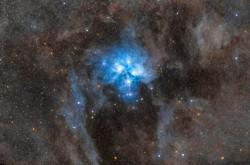Glossary term: Objet Messier
Description: Un objet Messier est l'un des 110 objets répertoriés pour la première fois par Charles Messier et Pierre Méchain en 1781. Messier et Méchain cherchaient des comètes, qui apparaissent floues et étendues, mais ils ont trouvé de nombreux objets flous et étendus qui ne semblaient pas bouger. Ils ont catalogué ces objets afin de ne pas perdre de temps d'observation s'ils les observaient à nouveau. Ces objets flous et étendus situés au-delà de notre système solaire ont été baptisés "nébuleuses".
Dans sa forme actuelle, le catalogue contient 55 amas d'étoiles, 39 galaxies, 11 vraies nébuleuses et cinq groupes d'étoiles. Ces objets sont les cibles préférées des astronomes amateurs. Compilé par Messier pour éviter des erreurs, ces objets sont des trésors pour les astronomes amateurs.
Les objets Messier sont souvent désignés par leur numéro de catalogue précédé de la lettre "M". Ainsi, la galaxie spirale Messier 101 est souvent appelée M101.
Related Terms:
See this term in other languages
Term and definition status: The original definition of this term in English have been approved by a research astronomer and a teacher The translation of this term and its definition is still awaiting approval
The OAE Multilingual Glossary is a project of the IAU Office of Astronomy for Education (OAE) in collaboration with the IAU Office of Astronomy Outreach (OAO). The terms and definitions were chosen, written and reviewed by a collective effort from the OAE, the OAE Centers and Nodes, the OAE National Astronomy Education Coordinators (NAECs) and other volunteers. You can find a full list of credits here. All glossary terms and their definitions are released under a Creative Commons CC BY-4.0 license and should be credited to "IAU OAE".
If you notice a factual or translation error in this glossary term or definition then please get in touch.
Related Media
The Pleiades M45 with Majestic Dust
Credit: Mohamed Usama/IAU OAE
License: CC-BY-4.0 Creative Commons Attribution 4.0 International (CC BY 4.0) icons









